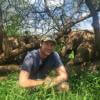With new technologies revolutionizing data collection, wildlife researchers are becoming increasingly able to collect data at much higher volumes than ever before. Now we are facing the challenges of putting this information to use, bringing the science of big data into the conservation arena. With the help of machine learning tools, this area holds immense potential for conservation practices. The applications range from online trafficking alerts to species-specific early warning systems to efficient movement and biodiversity monitoring and beyond.
However, the process of building effective machine learning tools depends upon large amounts of standardized training data, and conservationists currently lack an established system for standardization. How to best develop such a system and incentivize data sharing are questions at the forefront of this work. There are currently multiple AI-based conservation initiatives, including Wildlife Insights and WildBook, that are pioneering applications on this front.
This group is the perfect place to ask all your AI-related questions, no matter your skill level or previous familiarity! You'll find resources, meet other members with similar questions and experts who can answer them, and engage in exciting collaborative opportunities together.
Just getting started with AI in conservation? Check out our introduction tutorial, How Do I Train My First Machine Learning Model? with Daniel Situnayake, and our Virtual Meetup on Big Data. If you're coming from the more technical side of AI/ML, Sara Beery runs an AI for Conservation slack channel that might be of interest. Message her for an invite.
Header Image: Dr Claire Burke / @CBurkeSci

Explore the Basics: AI
Understanding the possibilities for incorporating new technology into your work can feel overwhelming. With so many tools available, so many resources to keep up with, and so many innovative projects happening around the world and in our community, it's easy to lose sight of how and why these new technologies matter, and how they can be practically applied to your projects.
Machine learning has huge potential in conservation tech, and its applications are growing every day! But the tradeoff of that potential is a big learning curve - or so it seems to those starting out with this powerful tool!
To help you explore the potential of AI (and prepare for some of our upcoming AI-themed events!), we've compiled simple, key resources, conversations, and videos to highlight the possibilities:
Three Resources for Beginners:
- Everything I know about Machine Learning and Camera Traps, Dan Morris | Resource library, camera traps, machine learning
- Using Computer Vision to Protect Endangered Species, Kasim Rafiq | Machine learning, data analysis, big cats
- Resource: WildID | WildID
Three Forum Threads for Beginners:
- I made an open-source tool to help you sort camera trap images | Petar Gyurov, Camera Traps
- Batch / Automated Cloud Processing | Chris Nicolas, Acoustic Monitoring
- Looking for help with camera trapping for Jaguars: Software for species ID and database building | Carmina Gutierrez, AI for Conservation
Three Tutorials for Beginners:
- How do I get started using machine learning for my camera traps? | Sara Beery, Tech Tutors
- How do I train my first machine learning model? | Daniel Situnayake, Tech Tutors
- Big Data in Conservation | Dave Thau, Dan Morris, Sarah Davidson, Virtual Meetups
Want to know more about AI, or have your specific machine learning questions answered by experts in the WILDLABS community? Make sure you join the conversation in our AI for Conservation group!
- @emilydorne
- | she/her
DrivenData
Lead Data Scientist and developer of zamba, a tool for automatic species classification from camera traps
- 0 Resources
- 1 Discussions
- 5 Groups
- @AnnabelL
- | she/her
- 0 Resources
- 0 Discussions
- 10 Groups
- @tutgut5
- | she/her
- 0 Resources
- 5 Discussions
- 8 Groups
Michigan Natural Features Inventory (MNFI)
Wildlife ecologist
- 0 Resources
- 1 Discussions
- 6 Groups
- 0 Resources
- 3 Discussions
- 11 Groups
Technologist & Wildlife Photographer at Google
- 0 Resources
- 1 Discussions
- 3 Groups
- @Romain
- | He
Biologist in Geneva
- 0 Resources
- 0 Discussions
- 4 Groups
Petnerup
Animal tech startup founder
- 0 Resources
- 2 Discussions
- 9 Groups
- 0 Resources
- 0 Discussions
- 5 Groups
Msc student on wildlife management and conservation
- 0 Resources
- 0 Discussions
- 8 Groups
World Wide Fund for Nature/ World Wildlife Fund (WWF)
- 0 Resources
- 7 Discussions
- 9 Groups
- @bluevalhalla
- | he/him
BearID Project & Arm
Developing AI and IoT for wildlife



- 0 Resources
- 23 Discussions
- 6 Groups
April 2024
event
event
September 2024
event
October 2024
December 2023
event
November 2023
event
AI to operate Wildlife Passage Gates
11 December 2023 4:17pm
22 December 2023 2:25pm
Aaah, this article suggests that RFID can be used for much greater distances so looks like RFID still remains the best choice.
22 December 2023 4:20pm
BTW. I found out that the Jetson Orin NX 16GB module is drawing around 20W when running continuous inference, processing streams from 6x cameras at 6 fps.
I'll try and find out what you can do with a Pi 5 and a smaller model over Christmas.
Semi-automated prediction of behavioral states in wild understudied King vultures (Sarcoramphus papa)
20 December 2023 1:34pm
For the current e-obs newsletter, Chris Beirne and I have summarized our previous work on the annotation of King vultures in Costa Rica.
Hydromoth for coastal & offshore surveying
16 November 2023 7:36am
18 November 2023 1:47am
Hi Sol,
I think your concern is well placed. The pros typically tow an array of hydrophones, in its simpler configuration it looks like a long fat rubber hose containing maybe a dozen transducers feeding their electrical signals to a recording unit back on the ship. All this is done to reduce noise from the ship, from waves crashing, and flow noise. The multiple transducers can also be electronically tuned to be directional so that it can be "pointed" away from a noise source (like the ship).
In your position, I would just try the simplest thing that could work, then fix the problems as they arise. It could be you may need to be dead in the water while recording. To address surface noise (slapping waves, wind), you could mount the hydromoth low down on a spar buoy, which you tow into position.
Best of luck, it sounds like an interesting project (c:
19 December 2023 2:20pm
Hydromoths are great for the price but they do not have the most streamlined housing and audio quality won't be as good as something like a SoundTrap or really any recorder with a proper hydrophone and 16-bit +DAQ system.
If you can afford it, this is an excellent SoundTrap based towed autonomous system NOAA have been using. It might work towed behind an autonomous vehicle
Alternatively, if you can have something inside the vehicle, a simple tape recorder (e.g. Tascam DR40X) and hydrophone on cable will provide excellent sound quality. You could also use something like a Raspberry Pi with audio focussed ADC hat to record but that would require a bit more programming. Even consider a standard AudioMoth and plug a proper hydrophone into the audio jack - this would still have a 12-bit ADC but would provide better sound quality than a hydromoth (hydrophones are more omnidirectional and there's no air filled causing reflections and attenuation)
20 December 2023 6:57am
If you are considering an external microphone and a towed system, then you would also be in a position to consider a raspberry pi with an external microphone with sbts-aru. Another option:
13th International Conference on Climate Informatics
18 December 2023 12:20pm
Grant for AI for biodiversity workshops (Latin America-Germany cooperations)
16 December 2023 6:27am
19 December 2023 2:55pm
How polar bears and people are kept safe thanks to integrated video and radar system
15 December 2023 12:22pm
Milestones Systems and Polar Bear International present their test of bear-dar in Churchill in the this Youtube video:
https://www.youtube.com/watch?v=WiXAHYCA99M
Bear-dar: Updates from the Field
15 December 2023 11:58am
Polar Bear International chat about bear-dar and burr on fur in this video on Youtube
https://www.youtube.com/watch?v=AfL42Wqctkk
Update on SEE Shell App to identify illegal tortoiseshell products
14 December 2023 10:00pm
Come for the trees and geese, stay for the AI: using computer vision for urban forestry and wildlife monitoring
13 December 2023 5:58pm
Benchmarking behavior classification of bio-logger data
13 December 2023 5:44pm
Benjamin Hoffman is a Senior AI Research Scientist with Earth Species Project, and joined last Variety Hour to talk us through his work to explore using self supervision to detect behavioral patterns in raw sensor data. Learn more!
Project support officer - Conservation Tech
11 December 2023 10:24pm
Data Viz Inspo for the Holidays
11 December 2023 8:42pm
Is anyone or platform supporting ML for camera trap video processing (id-ing jaguar)?
27 November 2023 10:49am
7 December 2023 12:42pm
Hey there community! Im new here and looking after lots of answers too! ;-)
We are searching aswell for the most ideal App / AI technology to ID different cats, but also other mammals if possible
- Panthera onca
- Leopardus wiedii
- Leopardus pardalis
and if possible:
- Puma concolor
- Puma yagouaroundi
- Leopardus colocolo
- Tapirus terrestris
Every recommendation is very welcome, thanks!
Sam
7 December 2023 2:31pm
Is this from camera trap images? Videos? Wildlife Insights is great! It uses Megadetector as a first pass to filter out empty images (those without animals), which you can also just use on its own. If you want to do individual re-ID, you can use Wildme. And as I mentioned previously in the comments, Zamba Cloud can work with videos. Conservation AI is another player in the game as well.
11 December 2023 1:38pm
Also, take a look at TrapTagger. It has integration with WildMe.
Trailguard AI cameras used for reducing human-wildlife conflict in India
9 December 2023 10:56pm
Two-year postdoc in AI and remote sensing for citizen-science pollinator monitoring
4 December 2023 12:21pm
WILDLABS Awards 2024: Supporting accessible, affordable, and effective innovation for nature
1 December 2023 11:00am
AI Earth: Using AI to tackle Climate Change
27 November 2023 10:16am
AWMS Conference 2023
Instant Detect 2.0 and related cost
16 November 2023 12:50am
16 November 2023 10:55am
Hi Kaarthika, hi all,
ZSL's Instant Detect 2.0 is currently undergoing Beta testing with external partners and so is still pre-production. We therefore do not have final pricing for the system.
Saying this, we have got a manufacturing partner fully set-up who has already completed two full build rounds of the system, one in 2020 and another in 2023. This means we actually have a very good idea of the system's build costs and what these are likely to be when we can manufacture the system in volume.
While I cannot release this pricing yet, I am confident that we will have an unparalleled proposition.
In particular, the satellite airtime package we can supply to conservationists due to the generosity of the Iridium Satellite Company means that each system can send 3,600 (25-50KB) images a month from anywhere in the world for a single fixed fee. This equates to around a 97% discount to the normal commercial rates.
We are currently very busy fundraising so that we can make this final step to scale the system.
If we can secure this funding, we hope to go into volume production by mid-2024.
Best wishes,
Sam
16 November 2023 2:12pm
Thank You for your valuable update Sam
16 November 2023 2:30pm
Hello Sam,
What would you say would be the estimate cost was for the first version Instant Detect 1.0 ? That might help my research ?
Catch up with The Variety Hour: November 2023
16 November 2023 12:59pm
Software Engineer at Rainforest Connection & Arbimon
14 November 2023 12:30am
Seeking Advice for Biodiversity Methodology
10 November 2023 3:58pm
Insight; a secure online platform designed for sharing experiences of conservation tool use.
7 November 2023 1:01pm
A secure platform designed for those working to monitor & protect natural resources. Insight facilitates sharing experience, knowledge & tools to increase efficiency & effectiveness in conservation. By sharing we reduce time & money spent to find, test, & implement solutions.
DeepFaune: a software for AI-based identification of mammals in camera-trap pictures and videos
14 July 2023 3:14pm
24 October 2023 8:46pm
Hello to all, new to this group. This is very exciting technology. can it work for ID of individual animals? we are interested in Ai for identifying individual jaguars (spots) and andean Bears (face characteristics). Any recommendation? contact? thanks!
German
25 October 2023 8:57am
That's a very interesting question and use case (I'm not from deepfaune). I'm playing with this at the moment and intend to integrate it into my other security software that can capture and send video alerts. I should have this working within a few weeks I think.
The structure of that software is that it is two stage, the first stage identifies that there is an animal and it's bounding box and then there's a classification stage. I intend to merge the two stages so that it behaves like a yolo model so that the output is bounding boxes as well as what type of animal it is.
However, my security software can cascade models. So if you were able to train a single stage classifier that identifies your particular bears, then you could cascade all of these models in my software to generate an alert with a video saying which bear it was.
4 November 2023 4:51am
Hi @GermanFore ,
I work with the BearID Project on individual identification of brown bears from faces. More recently we worked on face detection across all bear species and ran some tests with identifying Andean bears. You can find details in the paper I linked below. We plan to do more work with Andean bears in 2024.
I would love to connect with you. I'll send you a message with my email address.
Regards,
Ed
A SPOTLIGHT ON CUTTING-EDGE BIOMONITORING TECHNOLOGIES
31 October 2023 9:09am
15 November 2023 6:10pm
31 January 2024 7:17pm
Nepal's tiger conservation gets tech boost with AI-powered deer tracking
30 October 2023 1:23pm
Researchers in Nepal are using vertical cameras and AI technology to track and profile individual spotted deer (Axis axis), similar to the methods used for tigers.
Acoustic Monitoring Specialist
26 October 2023 7:32pm
AI + Environment Summit
26 October 2023 11:15am
































22 December 2023 2:02pm
In this case, I would use BLE proximity - enough and accurate range, low cost, long battery life, no false positives - KISS ;)